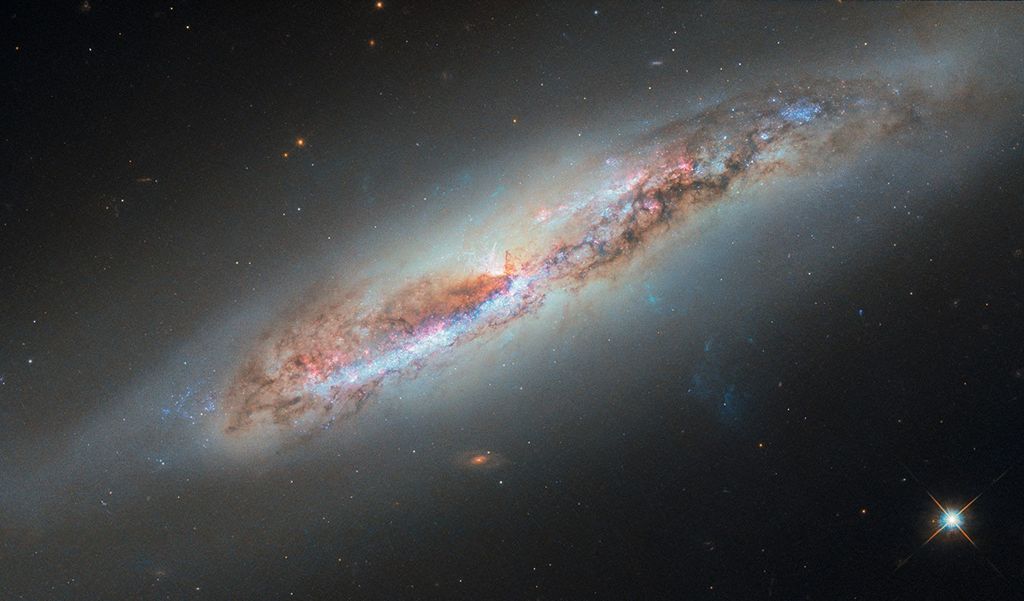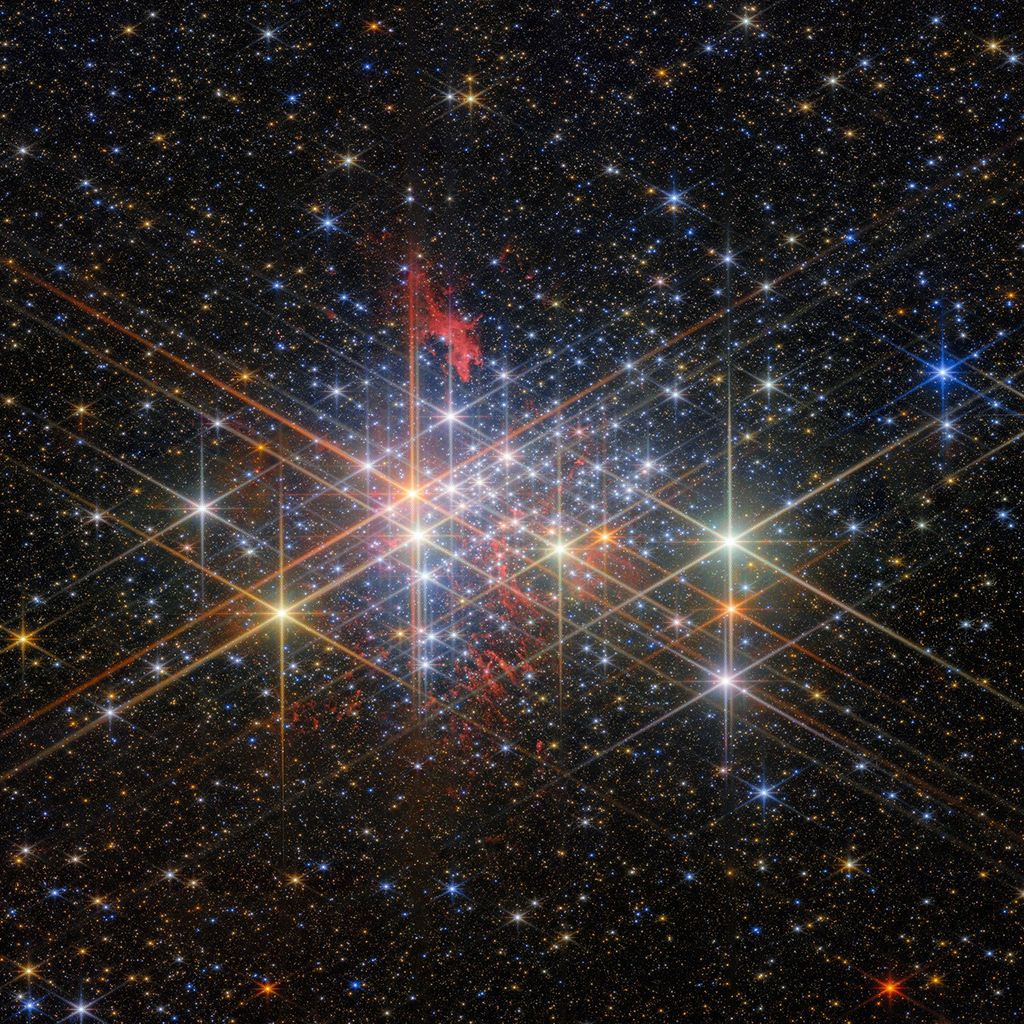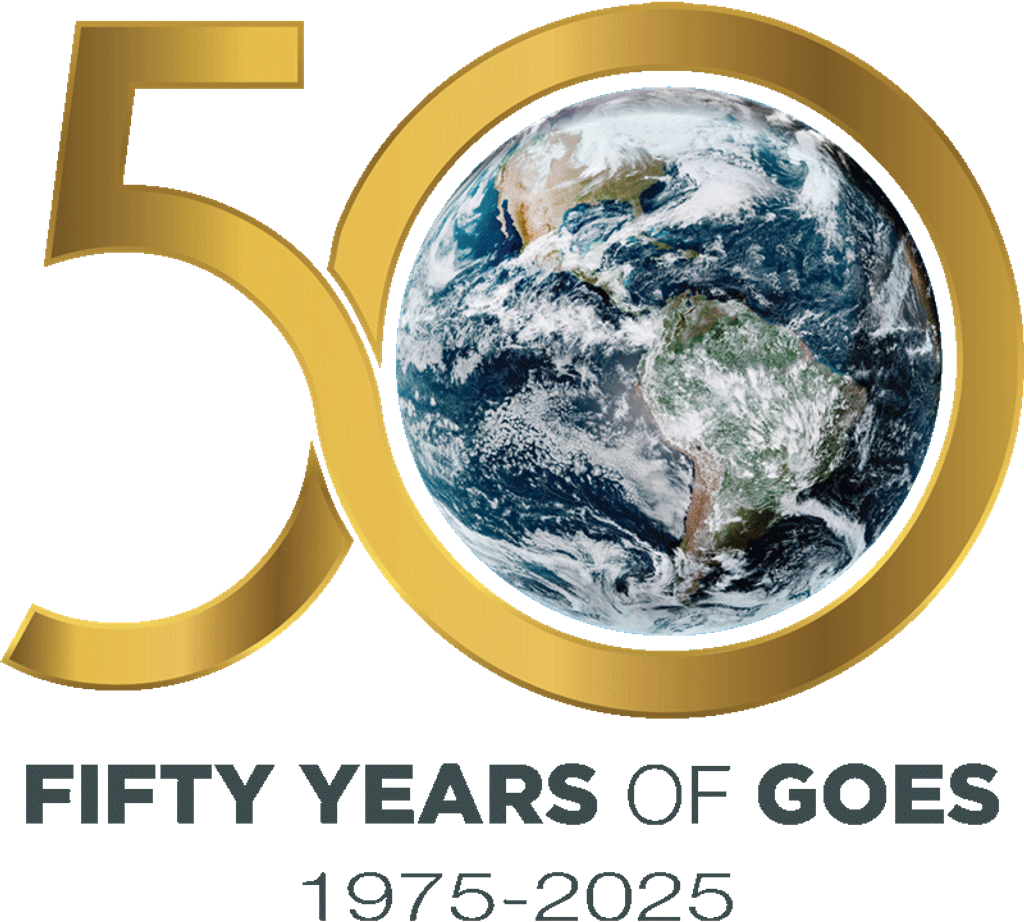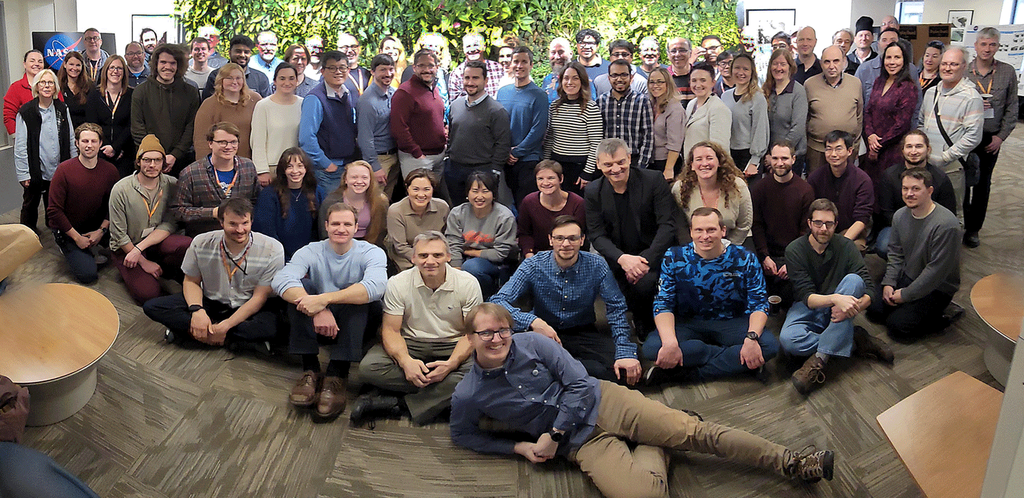1 min read
Hubble Spies Tiny Moons Circling Uranus
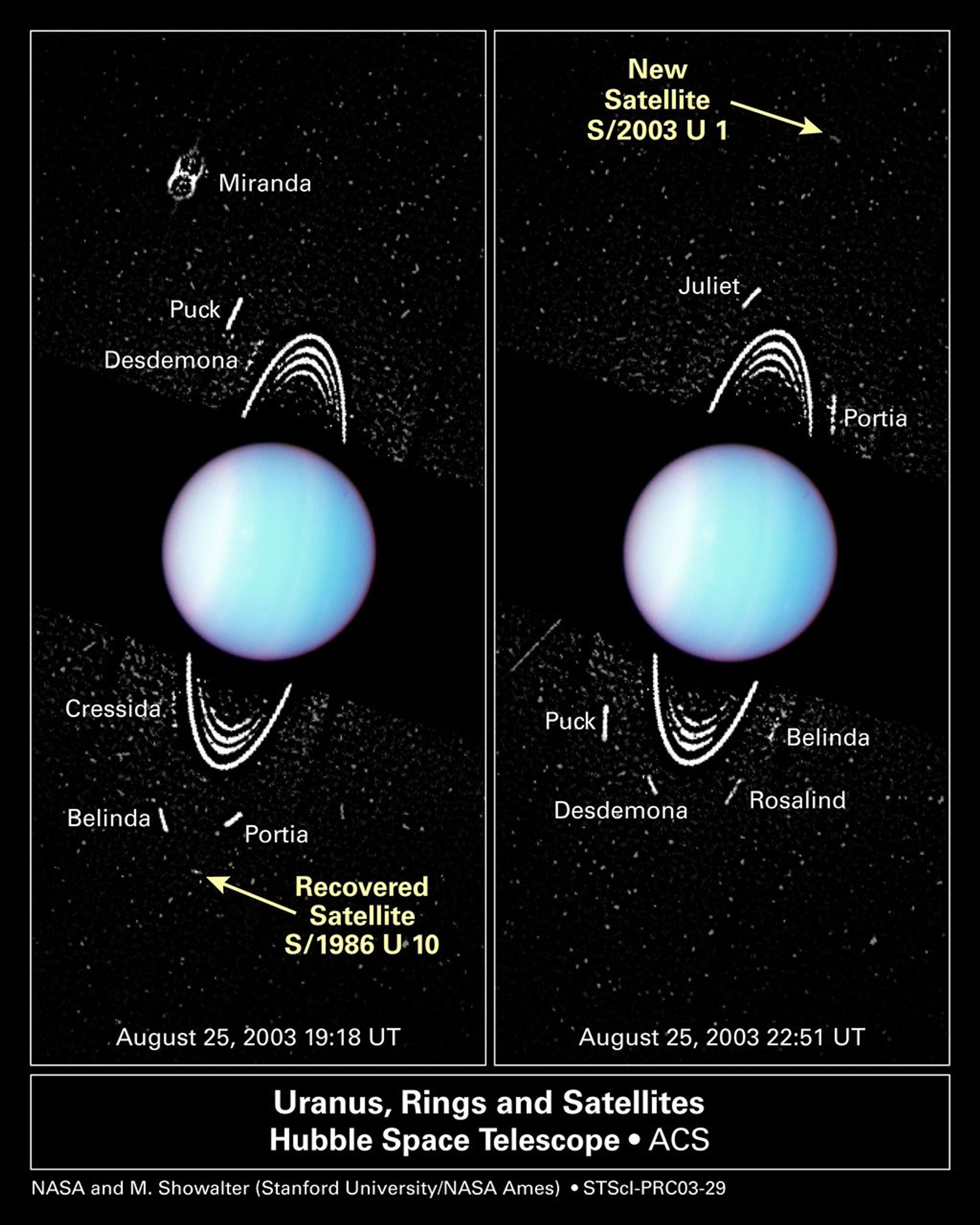
These images, taken with the NASA Hubble Space Telescope's Advanced Camera for Surveys (ACS), show several faint moons circling Uranus, including a newly detected moon and a rediscovered satellite. The planet's ring system can also be seen.
The arrow in the frame at right points to one of two newly discovered moons, among the smallest moons yet found around Uranus. The moon is temporarily designated as S/2003 U 1 until the International Astronomical Union (IAU) formally approves its discovery. S/2003 U 1 is orbiting 60,600 miles (97,700 km) away from the planet. If the satellite is as dark as Uranus's other moons, it is 10 miles (16 km) across, about the size of San Francisco. The Hubble telescope spotted this moon orbiting between the moons Puck, the largest satellite found by Voyager, and Miranda, the innermost of the five largest Uranian satellites. Astronomers previously thought this region was empty space. S/2003 U 1 whirls around the gas giant planet in 22 hours and 9 minutes.
The arrow in the frame at left points to a rediscovered moon orbiting 750 miles (1,200 km) away from the moon Belinda. The moon was detected in Voyager images, but the finding needed confirmation by an Earth-based telescope. Some astronomers think that S/1986 U 10 was once part of Belinda and broke off during a collision with a comet. Once certified by the IAU, these new discoveries will raise the number of Uranus moons to 24. Thirteen of them orbit even closer to Uranus than the five largest satellites, which are hundreds of miles wide. The location of one of those five satellites, Miranda, is shown in the image. The satellite itself cannot be seen because its bright light has been blocked out.
Astronomers stretched the limit of the ACS to find the S/2003 U 1 and S/1986 U 10. The moons are 40 million times fainter than Uranus. Even with the high resolution and sensitivity of the ACS, astronomers had to overexpose the images of Uranus to pinpoint the moons.
The images were made from a series of exposures taken Aug. 25, 2003. In order to show the faint moons in these images, the light from the much brighter Uranus has been blocked out. A separate but much shorter exposure of Uranus has been inserted into the images for reference. All the moons appear streaked because they were moving in their orbits during the long exposures. The white specks in the background are image artifacts.
About the Object
- DistanceDistanceThe physical distance from Earth to the astronomical object. Distances within our solar system are usually measured in Astronomical Units (AU). Distances between stars are usually measured in light-years. Interstellar distances can also be measured in parsecs.The semi-major axis of Uranus's orbit about the sun is 19.18 Astronomical Units (A.U.) or roughly 2.9 billion km. Moon S/2003 U 1 is 60,600 miles (97,700 km) away from Uranus. Moon S/2003 U 2 is 46,400 miles (74,800 km) away from Uranus.
- DimensionsDimensionsThe physical size of the object or the apparent angle it subtends on the sky.The planet (without rings) has a diameter of roughly 32,000 miles (51,000 km) at the equator. MoonS/2003 U 1 is 10 miles (16 km) wide. Moon S/2003 U 2 is 8 miles (12 km) wide.
About the Data
- Data DescriptionData DescriptionProposal: A description of the observations, their scientific justification, and the links to the data available in the science archive.
Science Team: The astronomers who planned the observations and analyzed the data. "PI" refers to the Principal Investigator.This image was created from HST data from proposal 9823: M. Showalter (Stanford University/NASA Ames) and J. Lissauer (NASA Ames). - InstrumentInstrumentThe science instrument used to produce the data.HST>ACS/HRC
- Exposure DatesExposure DatesThe date(s) that the telescope made its observations and the total exposure time.August 25, 2003
- FiltersFiltersThe camera filters that were used in the science observations.F330W (U)), F475W (g), F606W (V), F814W (I), CLEAR
- Object NameObject NameA name or catalog number that astronomers use to identify an astronomical object.Uranus
- Object DescriptionObject DescriptionThe type of astronomical object.Planet, Satellites
- Release DateSeptember 25, 2003
- Science ReleaseHubble Uncovers Smallest Moons Yet Seen Around Uranus
- Credit
Related Images & Videos

Time-Lapse of S/2003 U 1 Oribiting Uranus
This time-lapse movie shows a newly discovered moon orbiting Uranus. The movie was made from a series of 4-minute exposures taken Aug. 25, 2003 with the NASA Hubble Space Telescope's Advanced Camera for Surveys. The exposures were taken 5 minutes apart. The moon is temporarily...
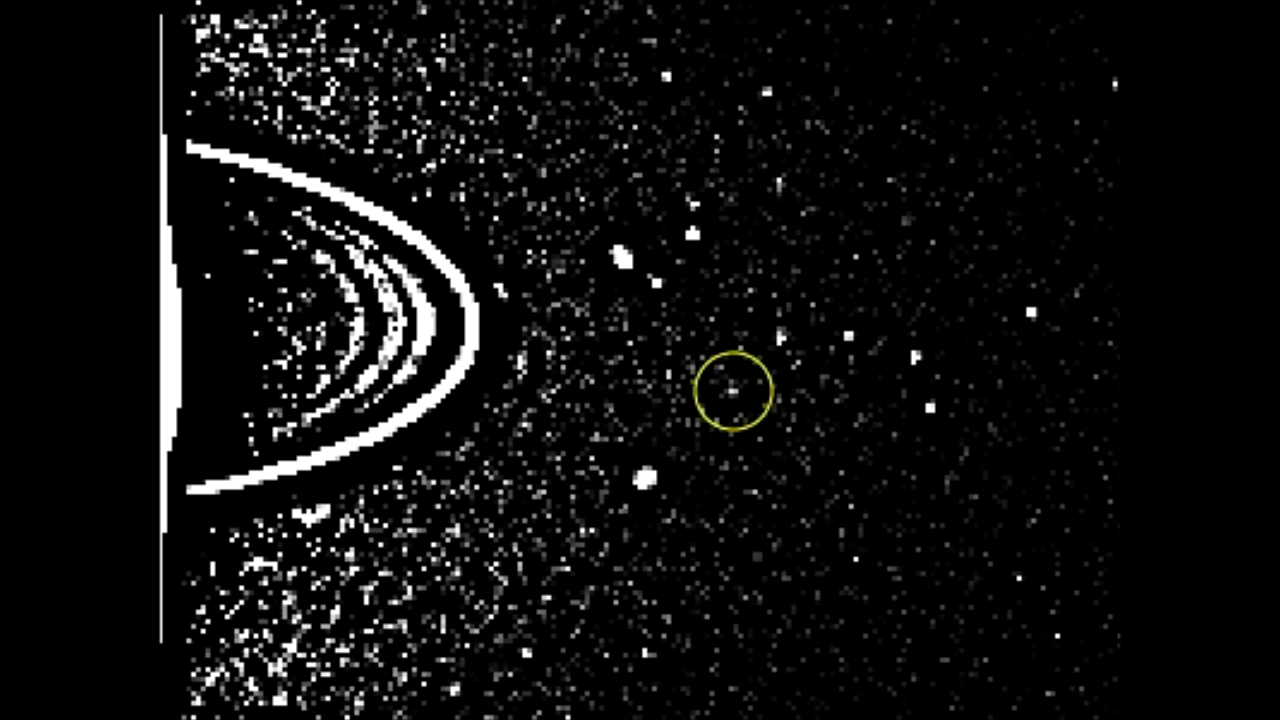
Time-Lapse of S/2003 U 2 Orbiting Uranus
This time-lapse movie shows a newly discovered moon orbiting Uranus. The movie was made from a series of 4-minute exposures taken Aug. 25, 2003 with the NASA Hubble Space Telescope's Advanced Camera for Surveys. The exposures were taken 5 minutes apart. The moon, Uranus's...
Share
Details
Claire Andreoli
NASA’s Goddard Space Flight Center
Greenbelt, Maryland
claire.andreoli@nasa.gov

